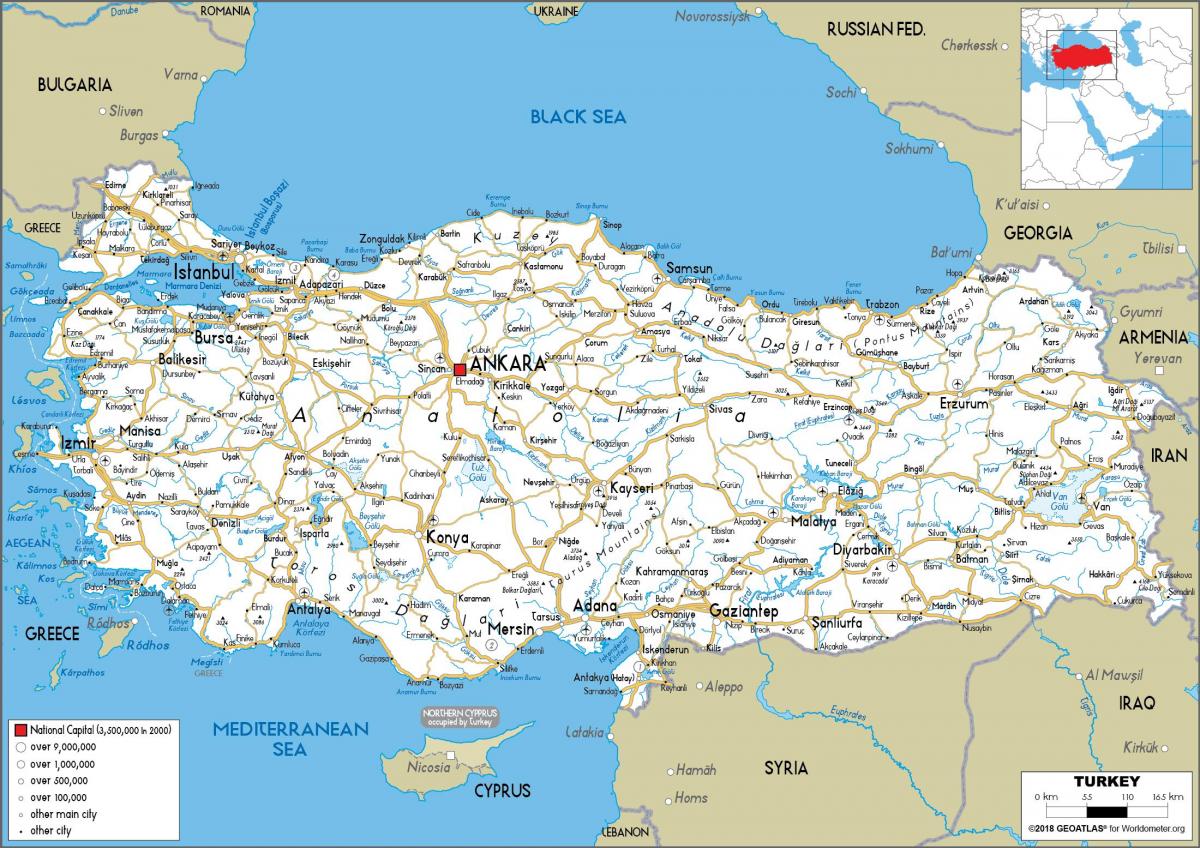search
Turkey map
Türkiye map. Turkey map (Western Asia - Asia) to print. Turkey map (Western Asia - Asia) to download. Turkey is a transcontinental Eurasian country. The major part of the country lies in the Anatolian Plateau of Western Asia while a small part is located on Southeastern Europe Balkan Peninsula as its shown in Turkey map. The Turkish Straits (Bosphorus and Dardanelles) and Sea of Marmara separate the European part of Turkey called East Thrace from Anatolia. Turkey is located in the Northern and Eastern Hemispheres of the Earth.
Turkey is classified as a middle- income country as its mentioned in Turkey map. Despite some progress, reducing inflation pressure, increasing export revenues etc. remain key issues. The recent global financial crisis emerged in the world economy and Turkey has also been affected this crisis. The most important effect is the cut in public investments especially in social sector provisioning. On the other hand unemployment and poverty has been increasing since late 2007.
Turkey varies in social and cultural structure with modern and traditional life styles within the society (see Turkey map). For the inhabitants of metropolitan areas daily life is similar to the Western countries. On the other hand, people living in outskirts of urban areas and rural settlements are relatively conservative and traditional. Family ties are still strong and influential in the formation of values, attitudes, aspirations and goals. Although laws are considered to be quite liberal on gender equality, patriarchal ideology characterizes the social life in many ways.
The monetary unit of Turkey is Turkish lira (TL) as you can see in Turkey map. One Turkish lira equals 100 kurus (pronounced kouroush). However, because of the high inflation rates Turkey has faced in the past 20 years, kurus are no longer used due to the low purchasing power. As of the end of 2000, there are coins of 10,000, 25,000, 50,000, and 100,000 liras. The 10,000 and 25,000-lira coins were expected to be phased out by 2001, and probably replaced with new coins of 500,000 and 1 million liras.
In July of 2000, Turkey's current population was estimated at 65,666,677 as its shown in Turkey map. Between 1990 and 2000, the average annual growth rate of the population was 1.27 percent, with a total fertility rate of 2.16 children born per woman. The World Bank expects Turkey's population to reach 91 million by 2025. Since 1986, the state has actively promoted population control but, ironically, for about 40 years following the establishment of the republic in 1923 the government actually encouraged population growth. The Turkish population is very young with only 6 percent aged 65 and over, and 65 percent between the ages of 15 and 65. In 1995, approximately 67 percent of the population lived in urban areas. As of 1999, urban dwellers increased to 75.3 percent of the total population. Approximately 20 percent of them live in Istanbul, making it the most heavily populated city in the country.


